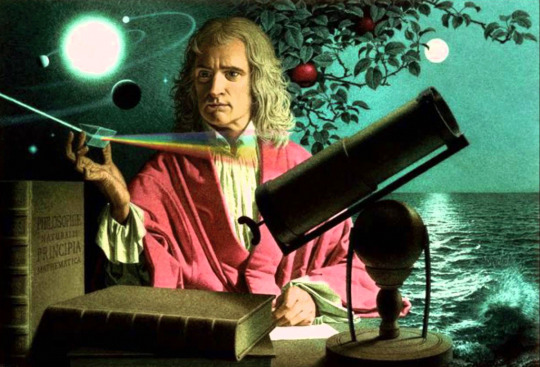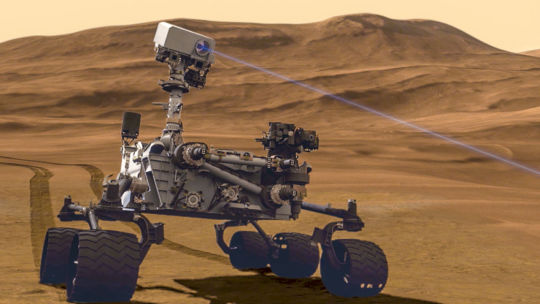Photo

New results from our Juno mission suggest the planet is home to “shallow lightning.” An unexpected form of electrical discharge, shallow lightning comes from a unique ammonia-water solution.
It was previously thought that lightning on Jupiter was similar to Earth, forming only in thunderstorms where water exists in all its phases – ice, liquid, and gas. But flashes observed at altitudes too cold for pure liquid water to exist told a different story. This illustration uses data obtained by the mission to show what these high-altitude electrical storms look like.
Understanding the inner workings of Jupiter allows us to develop theories about atmospheres on other planets and exoplanets!
Illustration Credit: NASA/JPL-Caltech/SwRI/MSSS/Gerald Eichstädt/Heidi N. Becker/Koji Kuramura
Make sure to follow us on Tumblr for your regular dose of space: http://nasa.tumblr.com
6K notes
·
View notes
Video
youtube
Unity 2020 Campfire Discussion - Bret and Eric Weinstein
0 notes
Text
wow
Tornadoes of the Sea

This dramatic image shows a waterspout formed off the coast of Florida. Waterspouts come in two varieties: tornadic and fair-weather. (Image credit: J. Mole; via APOD)
Read the full article
670 notes
·
View notes
Link
1 note
·
View note
Video
youtube
In this video I talk about research I'm doing on understanding the shapes of different bird's beaks. And how that is related to evolution.
The birds called darwin's finches, were collected by darwin when he was traveling on his expeditions. Eventually people figured out that these birds are important for the theory of evolution because they all evolved from a single ancestor a couple of million years ago.
Through the research of peter and rosemary grants, people found out that these birds are actually evolving in front of our eyes from generation to generation. Their beaks are constantly being shaped all the time.
My research focuses on finding mathematical methods that can analyze the differences between the shapes of beaks.
#science#biology#ecology#naturalist#physics#darwin#evolution#mathematics#physicslectures#geometric shape#on the origin of species#survival of the fittest#darwin's finches
3 notes
·
View notes
Video
youtube
This is part of the series: How Einstein Proved That Atoms Existed and How You Will Too. Which you can check out here and here
Averages and standard deviations are ways in which you can summarize the behavior of random things.
Before you can talk about these, you have two convert your random process from events to numbers.
For example, your set of outcomes could be O = {sunny, rain, snow}. You can convert that into X = {0, 1, 2}. You could’ve chosen a different set of number to describe your outcomes, but a different set will give you different averages. In this particular choice, the higher the number the less desirable the outcome (if you want to surf for example). Now you can describe each city by the average value of X, the lower this value the more you want to live there.
The problem is, knowing the average by itself can be deceiving. For example, if our set of outcomes was O = {extreme heat, nice and sunny, rain, snow, extreme cold}, two cities can have the same average but one is always nice and sunny, the other is always in one extreme. The standard deviation, gives us a measure of how much the weather jumps between extremes.
Watch the video for more insights into these two important measures.
#average#standard deviation#statistics#statistical physics#physics#albert einstein#mathematics#science#scientist#physics lecture#quantum physics#wonder
98 notes
·
View notes
Video
youtube
Probability theory helps us find patterns in the world when things are not predictable. Our first example will be a deck of cards, where cards are being drawn at random, which is an example of a discrete probability distribution. An example of a continuous probability distribution is betting on the finish time of a race.
The example above (here) demonstrates the basic framework of probability: You start with a set of possible outcomes of a measurement, call that set O. In our example, the possible outcomes are the individual cards in the deck. A given collection of outcomes is called an event, an example of an event is picking an ace, which is not a single outcome, it’s a collection of 4 different outcome. So remember you have an outcome which is the result of your measurement, and you have an event which group together different possible outcomes.
Probability theory basically assigns a number between 0 and 1 to each event. For example the probability of a spade card is 1/4, the probability of two coins being different is 1/2 and so on. These number can’t be anything, there are two main restrictions on them. Firstly, if the event is the entire collection of outcomes then the probability must be 1. That’s because you are sure that whatever the outcome is, it will be in the set of all possible outcomes!! Secondly if you combine two mutually exclusive events, events that don’t share any outcomes, then the probability of the combined event is the sum of the individual probabilities. We already saw this is in the first example, we added the probabilities of individual spade cards to get the combined probability of a spades event.
#physics#mathematics#scientist#science#learning#Albert Einstein#atoms#probability#statistics#statistical physics#fluid dynamics#weather
47 notes
·
View notes
Video
youtube
Sharing what I learned.
8 notes
·
View notes
Link

10 notes
·
View notes
Link

8 notes
·
View notes
Video
youtube
This video continues our discussion of the basics of classical physics, the theory that started our modern world.
Click here for the previous video:
From the center of earth through the oceans to extragalactic explosions this power theory is applicable. Stop and think about that. A few equations, that you can write down on a piece of paper have solutions that predict many of these phenomena.
Newton's laws, discovered about 400 years ago are powerful. Even though we know they are not the complete story, even though they are actually wrong they are still approximately true and are used to predict things like weather forecasts and rocket motion.
In the first video, I give a simple introduction into Newton's first law and talk a little about the second Law. Here I talk about how to define time and the concept of mass. I hope you get something out of it.
5 notes
·
View notes
Video
youtube
From the center of earth through the oceans to extragalactic explosions this power theory is applicable. Stop and think about that. A few equations, that you can write down on a piece of paper have solutions that predict many of these phenomena. Newton's laws, discovered about 400 years ago are powerful. Even though we know they are not the complete story, even though they are actually wrong they are still approximately true and are used to predict things like weather forecasts and rocket motion. In this video, I give a simple introduction into Newton's first law and talk a little about the second Law. I hope you get something out of it.
#physics#quantum mechanics#Albert Einstein#newton#general relativity#classical physics#physics lecture#science
11 notes
·
View notes
Text
Negative Temperature, Entropy and Imaginary time| Q & A
In this post, I will answer some popular physics questions. If you have questions you would like to see me answer next week, please leave them in the comments.
What does the negative temperature mean?
Negative temperature is not cold. In fact, in some sense its hotter than infinite temperature!! So what the hell do I mean by that?
Like all things in life, it comes down to how you define things. In statistical physics temperature is a measure of the number of possibilities. More precisely, it is a measure in the increase in possibilities as the energy goes up. There are a lot of state that the world can be in that require a lot of energy. For example, in a gas, as the energy goes up the number of possibilities goes up. That’s because these particles can move faster, some of them can still move slowly but there are more speed values available to them now, and that’s why the temperature goes up!!
This is clearly not what we think temperature is when we say something is hot. We mean that when we touch it a lot of energy flows to us and we feel that “burn”. But the reason that happens is that the energy flowing to us after we touch it makes the particles of our body move faster. That’s actually why heat flows from higher temperature to a lower temperature, it increases the number of possibilities, and that’s why it is more likely to happen.
What is imaginary time?
This is another example that sounds cooler than it actually is. It’s again a matter of definition and math.
To understand what an imaginary time is, you first have to understand what an imaginary number is. An imaginary number is a number where if you square it gives you a negative number. You probably remember that if you square any real number the answer is positive. So how can there be a number that you square and gives you something negative? Well, it’s not a real number it’s an “imaginary number”. You just define an object abstractly that when you square would give you -1, and then you give that a name usually the square root of -1 is called i. And that’s that.
This might sound weird to you. Where did this number come from? what does it mean? how can you picture it? remember that is also weird to define the square root of 2, there’s no integer that satisfies x² = 2. So how did we get to square root of 2? We made it up! we defined it.
Another ingredient to understand imaginary time is Pythagorean theorem or Euclidean distances: R² = T² + x² + y². The distance squared to a point is the squared sum of it’s coordinates. When you rotate something this distance is unchanged. In Einstein's theory of relativity the thing that is unchanged is actually R² = -t² + x² + y². Notice that the symmetry which actually defines relativity, this equation results in the strange behavior of relativity is similar to rotational symmetry of lengths. All we have to do to make them the same is go to imaginary time: t = i T.
youtube
#physics#math#thermodynamics#quantum physics#stephen hawking#quantum mechanics#quantum gravity#science
83 notes
·
View notes